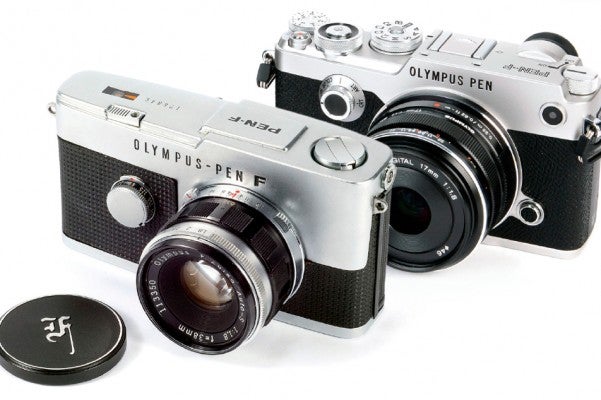What messages are manufacturers sending out with the visual styling of their new models?
One side of product development that often seems to be ignored is industrial design. I frequently see comments based on a tacit assumption that the cameras we see today are entirely the product of engineers.
In a world where the way a product looks and feels probably has as large an effect on its sales success as its functionality, it would be surprising if manufacturers did not pay at least as much attention to this aspect of a product as they did to its internal engineering.
Recently I was looking in a shop window where a Nikon D7000 was displayed next to a D7100. When placed side by side, the detailed differences in the styling were very apparent, with the D7100 faithfully following the styling cues from the D4, the more rounded look compared to the D3 generation with bevelled edges.
Looking at the new D500, it is clear that the designers have tried to ensure a family similarity to the D5, which, in turn, has been endowed with new styling cues to differentiate it from the D4 generation. The most noticeable of these is the ‘scalloped’ edges of the prism housing, and reduced ‘hunched’ shoulders than the earlier camera, plus a more pronounced top to the grip. In the case of the D500, clearly what was in the designers’ minds was underlining the impression that this is a ‘mini D5’, a message that Nikon’s publicity has emphasised.
Heritage lines
Another message that seems to be popular these days is making a link to famous cameras of the past. Nikon has played this game with the Df, a camera that looks like a swollen Nikon FE, while Fujifilm has made its mark with a range of cameras unashamedly echoing classic SLRs and rangefinder cameras. Olympus has ‘double dipped’ this trend. First, it styled its first series of electronic viewfinder compact-system cameras making obvious reference to its famous OM range of film SLRs, underlining this by giving the cameras the designation ‘OM-D’. Now, with its latest offering, Fuji has revived another old Olympus name, the Pen-F. To date, Olympus has used the name Pen for its line of cameras that rely on the rear LCD as a viewfinder. The Pen-F has a built-in eye-level electronic viewfinder.
It has been styled to resemble the Olympus Pen-F of 1963, Olympus’s first SLR camera, made when Olympus was still exclusively a half-frame camera company. The Pen-F had a number of unusual features, one of which was a Porro-prism viewfinder, which lacked the usual SLR hump. Olympus re-used this idea for the E-300 DSLR. The new Pen-F, with its electronic viewfinder, has no prism, but the ‘humpless’ look contrasts nicely with the pentaprism hump so carefully recreated in the OM-D series.
Bob Newman is currently Professor of Computer Science at the University of Wolverhampton. He has been working with the design and development of high-technology equipment for 35 years and two of his products have won innovation awards. Bob is also a camera nut and a keen amateur photographer





